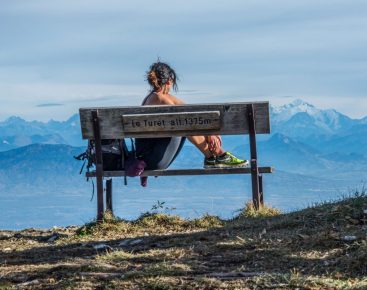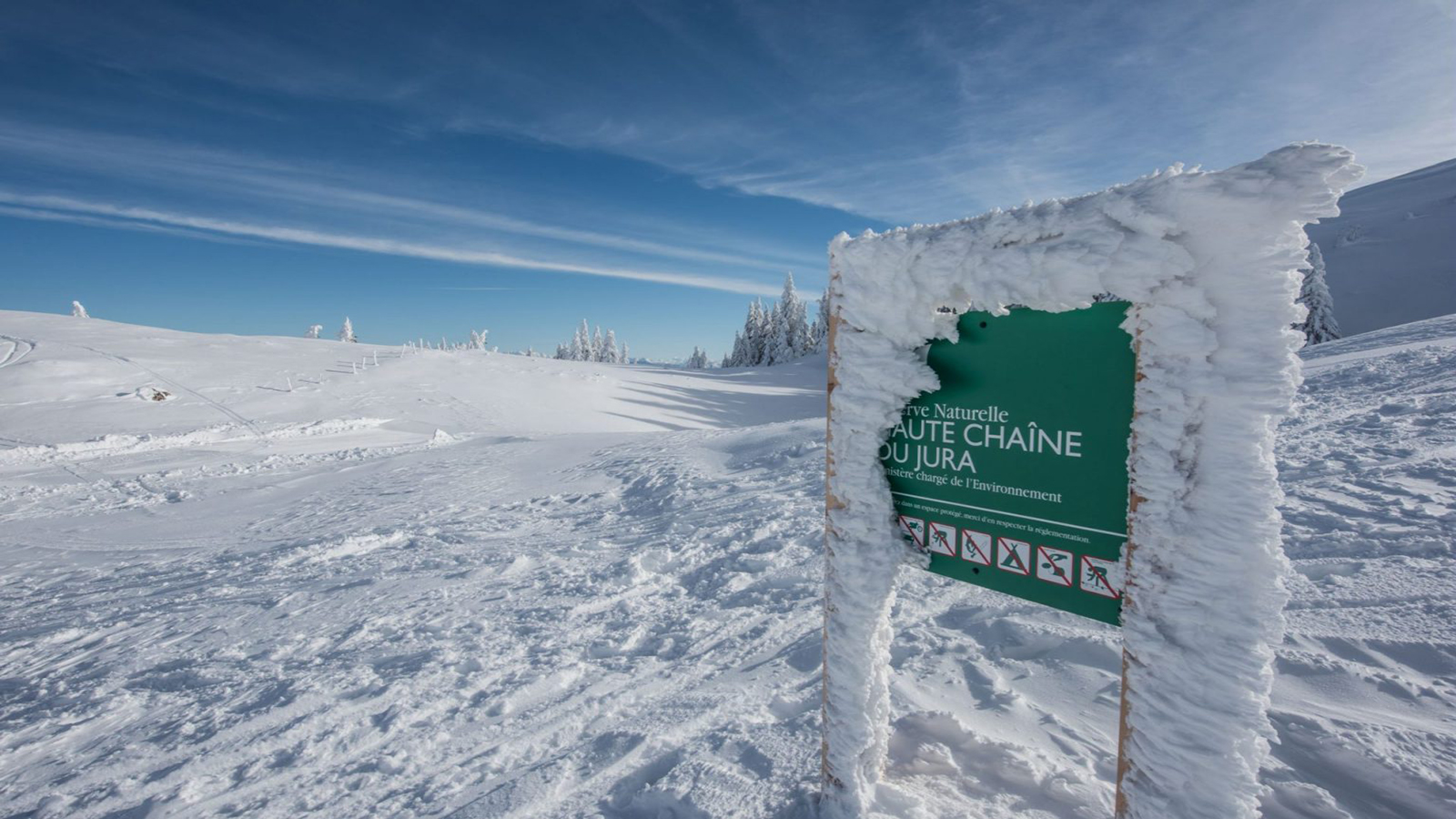Nature Published on 23/02/2022
After many weeks awaiting winter, snow has finally fallen on our mountain tops! So, take a deep breath of fresh air and enjoy it fully! Snowshoe trails and breathtaking landscapes are yours…
But hold on a bit before starting. Are you aware that the Haute Chaîne du Jura is, for the most part, classified as a National Nature Reserve and that regulations exist?
You are not? Well, here is an overview of this protected area so that you can enjoy it while respecting it! Let’s get started!
What is a National Nature Reserve?

A national nature reserve is a protected territory with ministerial regulations whose purpose is to conserve and protect its natural wealth: flora, fauna, minerals, etc.
In the Pays de Gex and its Monts Jura resort, in the county of Ain, there is the National Nature Reserve of the Haute Chaîne du Jura, or RNNHCJ (…indeed it is a bit too long to write 😉). Most of the Haute Chaîne du Jura has been classified as a nature reserve since 1993.
An outstanding natural heritage
There are close to 11,000 hectares in the RNNHCJ! It ranks among the largest in mainland France, and 4th in terms of surface area. The region’s vast territory is home to a wealth of flora and fauna. It has remarkable species, environments and landscapes, all of which are extremely fragile eco-systems.
Some figures:
- Flora: A total of 1466 plants have been recorded in the nature reserve. These include 85 species on the endangered lists and 6 species that are protected at national level.
- Fauna: There are 205 vertebrate species in the RNNCHJ. One of the best-known and most emblematic species is the western capercaillie, a turkey-like bird which is highly endangered.
![]()
The blue thistle ![]()
Capercaillie ![]()
The spotted woodpecker
The RNNHCJ logo is actually composed of the capercaillie. It is therefore the mascot of our territory 😉
Throughout the seasons, this little world cohabits with you, walkers, and hikers, but also with mountain farmers, hunters, and foresters. For this to happen, everyone must adapt their behaviours. A list of rules and regulations has been created so that everyone can continue to enjoy.
Protecting through regulation
No doubt you have figured out our point. By changing our behaviour and adapting it to the environment we live in, we can all contribute to the preservation of this remarkable territory.
Which regulations must be respected?
The most important ones are the ones we will mention below:

- No dogs are allowed, even on a leash, as their barking can force wild animals to leave their refuge, especially in winter. The smell of your dog can even be enough to disturb wildlife.
- Dumping waste is forbidden because it pollutes and can cause injuries to wildlife.
- Plant picking is forbidden as some of them are protected. Yet, the picking of medicinal plants, berries, small wild fruits, and mushrooms is allowed under the general regulations.
- All forms of camping are prohibited to reduce wildlife disturbance, as the area is already very busy during the day.
- In order to ensure the wildlife and livestock’s tranquillity, motor vehicle traffic is limited to permit holders.
To find out about all the prohibitions, you can click here!
Note: Signs at the entrance to the nature reserve remind you of the regulations in force!
Close-up on tranquillity zones
Here we would like to explain why wildlife tranquillity zones are in place and how they are set up.
The wildlife of the RNN goes through delicate periods such as winter and spring.
There are several reasons:
- Extreme weather conditions can cause food scarcity for animals during the winter.
- The snow retreats and the spring’s milder temperatures encourage a revival of wildlife activity. Parades, songs, etc. are all in the air at that time.

To ensure the tranquillity of the fauna and thus avoid dramatic and irreversible impacts on it, tranquillity zones have therefore been set up.
Within these zones, no physical activity is allowed, whether on foot, snowshoes, or skis. Special marked trails are set up during this period to limit disturbance. It is forbidden to leave these trails.
The policy restriction applies from 15 December to 30 June (15 December to 15 May for the Platières site) each year.
Note: The quiet zones are indicated by large banners and signs. It is therefore impossible to miss them 😉
Tip: to find out where the quiet zones are, we recommend that you consult the map of the RNN by clicking here!
This concludes our little tour of the RNN and its mission of preservation and protection! We hope that from now on, when you go out, think of the surrounding but fragile fauna and flora which create the landscapes that we love so much in the Pays de Gex.
See you soon and above all, keep your eyes open, nature has so much to offer!








